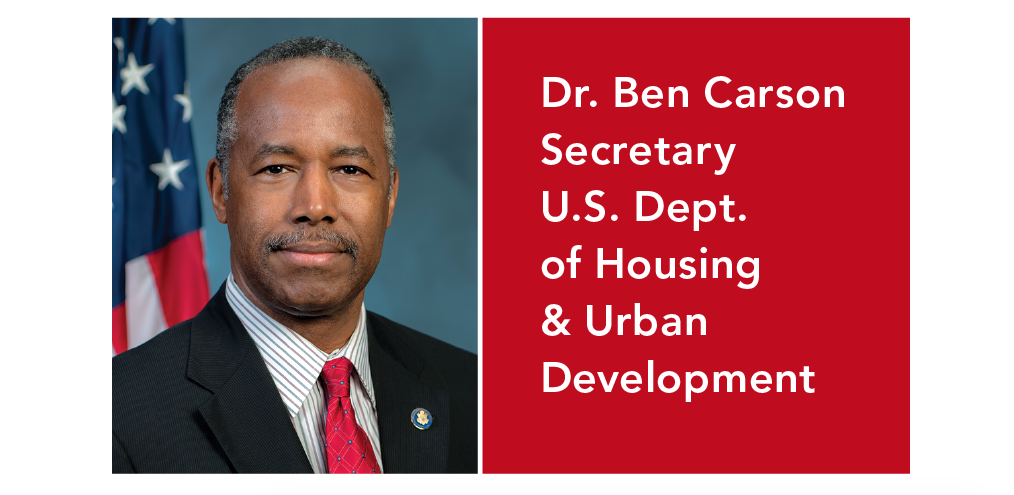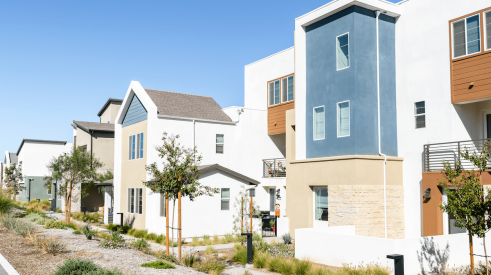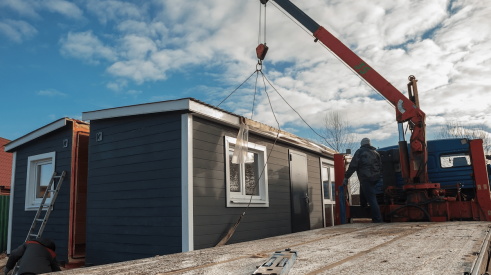As President Trump’s choice to lead the Department of Housing and Urban Development (HUD), Ben Carson drew curiosity and criticism for his lack of professional experience in that realm.
In the two years since then, he’s been a “fast learner,” says Caroline Vanvick, the agency’s deputy assistant secretary of public affairs, and has drawn from his career as a pediatric neurosurgeon to help inform policy initiatives. “He’s seen the effect of poor housing conditions on the health of his patients, so he understands the need for safe, healthy, and affordable housing for all,” she says.
Before speaking to NAHB’s board of directors at the 2019 International Builders’ Show, Secretary Carson took a short tour of the exhibit floor, then granted an exclusive interview to Professional Builder and two local reporters. Topics ranged from HUD’s role in private-sector housing to opportunities and incentives for builders to engage the agency to his view of affordable housing solutions.
Q: How can private-sector builders and developers engage HUD?
A: Some of the newer programs we’re establishing, such as opportunity zones across the country and the RAD (Rental Assistance Demonstration) program to preserve and improve public housing, are designed to bring the private sector in. We offer incentives to invest and remain in a community for five, seven, or 10 years, so instead of “Here today, gone tomorrow,” it’s “Here today, here to stay.” We’re hoping to attract more than $100 billion in private investment [in those areas].
We’re also increasing the amount of equity available from the Low Income Housing Tax Credit, especially for multifamily home development.
And, don’t forget that a major portion of HUD is the Federal Housing Administration (FHA), which insures home building and mortgage loans.
Q: Are there any new funding or revenue sources that HUD can utilize?
A: You have to ask where the money is, and it’s in the private sector. The primary goal in the private sector is to make money, so if we can create programs that allow that while at the same time provide funding to ameliorate the living environments for people, I don’t know how you get better than that.
Q: How much influence or input can HUD have on state and local land-use policies, density restrictions, and entitlement processes that can hinder affordable housing?
A: We don’t find it useful to get into battles [over policy], but we are having conversations with state and local governments and agencies about those issues. There are several million families spending more than half their income on housing and people making $60,000 dollars a year who can’t afford a house because of zoning and other regulations that have increased housing prices to outrageous levels.
Those obstructions are unlocked by adding positive incentives and subtracting perverse incentives. By reforming these restrictive land-use regulations, neighborhoods could create more affordable housing by increasing density, without changing the core characteristics of their community.
We can have some impact [on those policies] by giving extra points to those who apply for federal housing grants and removing those and other obstacles to affordable housing.
Q: What is the role of technology in helping to address housing affordability?
A: There’s a lot of new technology coming into the industry that can be beneficial in terms of efficiency, cost, and mitigation, [but] we need to update the thinking to match it.
We have a huge affordable housing issue going on in the country right now, and we really need to be thinking about the most economical, efficient, and effective ways of building. Even if something is slightly more expensive [up front], if it eliminates the need to replace down the line, that’s a bargain.
We’re very excited about recent innovations in construction materials that are higher performing; less prone to mold, wind, or water damage; and more resistant to deterioration, as well as technologies in home construction.
Q: What is HUD’s role in bringing those technologies and innovations into the mainstream?
A: We can serve as a catalyst for information about innovation in the home building industry, with the goal of speeding adoption and use of new technologies. We also must understand the risks. The HUD Office of Innovation will be working with partners and housing industry stakeholders to promote the development, inclusion, and adoption of new technologies throughout the housing sector.
Q: Between public-private partnerships for new housing or replenishing or upgrading existing public housing stock, which is the higher opportunity for HUD?
A: Our RAD program includes provisions for the preservation of affordable units while addressing a [$26 billion] backlog of deferred maintenance in existing public housing. We’re looking at the whole gentrification process and making sure we work on a few different levels: to improve economically distressed areas in a holistic way and make the aid we provide to people [such as vouchers] more palatable for landlords to accept and process. But our big priority is affordable housing for everyone.
- This story originally appeared in the April 2019 issue of Professional Builder magazine. See the print version of this article here.
Advertisement
Related Stories
Affordability
The Disappearing Act That Is Middle-Income Housing
An expert weighs in on the diminishing supply of middle-income housing, which is particularly acute in California, and what to do about it
Off-Site Construction
Utah Passes Bill to Regulate Modular Construction at the State Level
Goals for housing innovation and affordability meet in the Utah's passage of a new bill that establishes a statewide modular construction program
Affordability
Affordability Improves, but the Average Worker Still Struggles to Afford a Home
Homeownership around the U.S. continues to require historically large portions of worker wages, a new housing-affordability report finds







